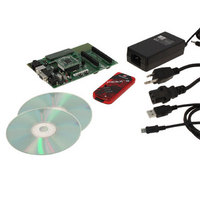DV164136 Microchip Technology, DV164136 Datasheet - Page 187

DV164136
Manufacturer Part Number
DV164136
Description
DEVELOPMENT KIT FOR PIC18
Manufacturer
Microchip Technology
Series
PIC®r
Type
MCUr
Datasheets
1.DM183032.pdf
(38 pages)
2.DV164136.pdf
(448 pages)
3.DV164136.pdf
(6 pages)
4.DV164136.pdf
(446 pages)
5.DV164136.pdf
(4 pages)
6.DV164136.pdf
(18 pages)
Specifications of DV164136
Contents
Board, Cables, CDs, PICkit™ 3 Programmer, Power Supply
Processor To Be Evaluated
PIC18F8722, PIC18F87J11
Interface Type
RS-232, USB
Operating Supply Voltage
3.3 V, 5 V
Silicon Manufacturer
Microchip
Core Architecture
PIC
Core Sub-architecture
PIC18
Silicon Core Number
PIC18F
Silicon Family Name
PIC18F8xxx
Kit Contents
PIC18 Exp Brd PICkit 3 Cable CD PSU
Lead Free Status / RoHS Status
Lead free / RoHS Compliant
For Use With/related Products
PIC18F8722, PIC18F87J11
Lead Free Status / Rohs Status
Lead free / RoHS Compliant
Available stocks
Company
Part Number
Manufacturer
Quantity
Price
Company:
Part Number:
DV164136
Manufacturer:
MICROCHIP
Quantity:
12 000
- DM183032 PDF datasheet
- DV164136 PDF datasheet #2
- DV164136 PDF datasheet #3
- DV164136 PDF datasheet #4
- DV164136 PDF datasheet #5
- DV164136 PDF datasheet #6
- Current page: 187 of 448
- Download datasheet (8Mb)
13.7
Following a Timer1 interrupt and an update to the
TMR1 registers, the Timer1 module uses a falling edge
on its clock source to trigger the next register update on
the rising edge. If the update is completed after the
clock input has fallen, the next rising edge will not be
counted.
If the application can reliably update TMR1 before the
timer input goes low, no additional action is needed.
Otherwise, an adjusted update can be performed fol-
EXAMPLE 13-1:
© 2009 Microchip Technology Inc.
RTCinit
RTCisr
Considerations in Asynchronous
Counter Mode
MOVLW
MOVWF
CLRF
MOVLW
MOVWF
CLRF
CLRF
MOVLW
MOVWF
BSF
RETURN
BTFSC
BRA
BTFSS
BRA
BSF
BCF
INCF
MOVLW
CPFSGT
RETURN
CLRF
INCF
MOVLW
CPFSGT
RETURN
CLRF
INCF
MOVLW
CPFSGT
RETURN
CLRF
RETURN
IMPLEMENTING A REAL-TIME CLOCK USING A TIMER1 INTERRUPT SERVICE
80h
TMR1H
TMR1L
b’00001111’
T1CON
secs
mins
.12
hours
PIE1, TMR1IE
TMR1L,0
$-2
TMR1L,0
$-2
TMR1H, 7
PIR1, TMR1IF
secs, F
.59
secs
secs
mins, F
.59
mins
mins
hours, F
.23
hours
hours
; Preload TMR1 register pair
; for 1 second overflow
; Configure for external clock,
; Asynchronous operation, external oscillator
; Initialize timekeeping registers
;
; Enable Timer1 interrupt
; Insert the next 4 lines of code when TMR1
; can not be reliably updated before clock pulse goes low
; wait for TMR1L to become clear
; (may already be clear)
; wait for TMR1L to become set
; TMR1 has just incremented
; If TMR1 update can be completed before clock pulse goes low
; Start ISR here
; Preload for 1 sec overflow
; Clear interrupt flag
; Increment seconds
; 60 seconds elapsed?
; No, done
; Clear seconds
; Increment minutes
; 60 minutes elapsed?
; No, done
; clear minutes
; Increment hours
; 24 hours elapsed?
; No, done
; Reset hours
; Done
PIC18F87J11 FAMILY
lowing a later Timer1 increment. This can be done by
monitoring TMR1L within the interrupt routine until it
increments, and then updating the TMR1H:TMR1L reg-
ister pair while the clock is low, or one-half of the period
of the clock source. Assuming that Timer1 is being
used as a Real-Time Clock, the clock source is a
32.768 kHz crystal oscillator. In this case, one-half
period of the clock is 15.25 μs.
The Real-Time Clock application code in Example 13-1
shows a typical ISR for Timer1, as well as the optional
code required if the update cannot be done reliably
within the required interval.
DS39778D-page 187
Related parts for DV164136
Image
Part Number
Description
Manufacturer
Datasheet
Request
R

Part Number:
Description:
Manufacturer:
Microchip Technology Inc.
Datasheet:

Part Number:
Description:
Manufacturer:
Microchip Technology Inc.
Datasheet:

Part Number:
Description:
Manufacturer:
Microchip Technology Inc.
Datasheet:

Part Number:
Description:
Manufacturer:
Microchip Technology Inc.
Datasheet:

Part Number:
Description:
Manufacturer:
Microchip Technology Inc.
Datasheet:

Part Number:
Description:
Manufacturer:
Microchip Technology Inc.
Datasheet:

Part Number:
Description:
Manufacturer:
Microchip Technology Inc.
Datasheet:

Part Number:
Description:
Manufacturer:
Microchip Technology Inc.
Datasheet:











